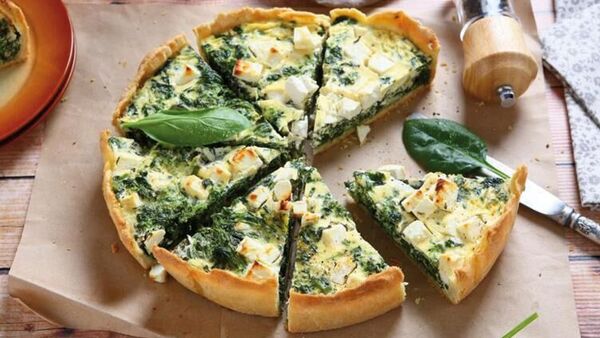Non-Britons who, like your correspondent, love and spend a lot of time in Britain often find themselves defending it from outdated and unkind culinary stereotypes. Britain boasts the world’s best beef, lamb, whisky, beer, cold-weather vegetables and summer berries. London is the most delicious and diverse food city on Earth. Yet far too many people still think of it as a country of overcooking, underseasoning and inexplicable products such as Marmite, Bisto and mushy peas (ideally not all at once, though you never know). The penitential bean-and-spinach quiche that King Charles and Camilla, the queen consort, unveiled as their special coronation dish does not make things easier.
Start with its selling points. It is vegetarian, and the planet would be healthier if people ate less meat. Charles has a long interest in environmentalism and sustainability and, according to a former Royal Family chef, is very fond of eggs and cheese. Camilla has been patron of The Big Lunch, which brings neighbours “together to share friendship, food and fun”, for a decade. She and Charles hope their compatriots will celebrate with Coronation Big Lunches across Britain; a quiche, which sits at the centre of a table to be shared, is an ideal communal-dining centrepiece.
This particular quiche, however, seems both stodgy and rather light on flavour. Beans can be delicious, but they can also, as here, be starchy and bland. Suspending them in an exceptionally rich custard with cooked spinach and just a whisper of tarragon produces a deadeningly heavy, uninviting dish. The 15-minute blind bake seems far too short for a filling with this much milk, cream, eggs and cheese, increasing the risk that the Big Lunch will end up a Big Mess.
Indeed, the quiche seems a throwback to the patchouli-scented vegetarianism of the 1970s and 80s, when vegetarians wanted to make sure everyone knew they eschewed meat not because well-prepared vegetables are delicious, but because they were above such quotidian, selfish concerns as wanting food to actually taste good. There can be few better places anywhere for vegetarians to eat than London, with its profusion of South and East Asian restaurants, and socially conscious chefs and diners. This quiche turns its doughy back on all of that.
Charles’s mother’s celebratory dish, chicken in a curried cream sauce, was much worldlier and more imaginative. In its classical French preparation and name (“Poulet Reine Elizabeth”; the informal “coronation chicken” came later), it nodded toward Britain’s long entente cordiale with its neighbour across the channel. The use of curry powder and rice, over which the chicken was served, nodded toward the recently ended Raj. The restrained lavishness of including peas, pimentos, wine and fresh herbs—ingredients either newly available or, for the large share of the country still under wartime rationing, unavailable—augured a more bountiful future. Less charitably, it could be seen as lording it over the commoners, but that is not who Elizabeth was.
Nobody wishes a return to the lavishness of George IV, whose coronation feast included more than 3,000kg of beef and veal, 1,000kg of mutton and 160 geese—cooked in 400kg of butter and washed down with 1,200 bottles of champagne. The total cost of the pageantry was around £27m ($33.6m) in today’s money. But Charles’s bland and tediously worthy choice goes too far in the other direction.
© 2023, The Economist Newspaper Limited. All rights reserved. From The Economist, published under licence. The original content can be found on www.economist.com
Download The Mint News App to get Daily Market Updates.
More
Less
#King #Charless #Coronation #Quiche
